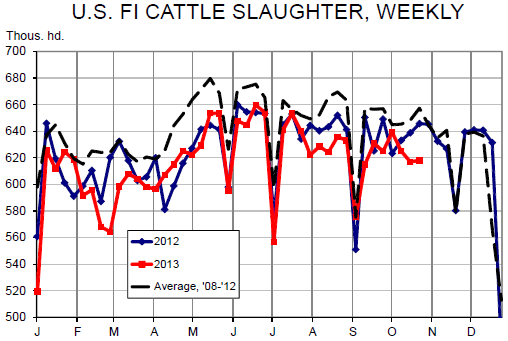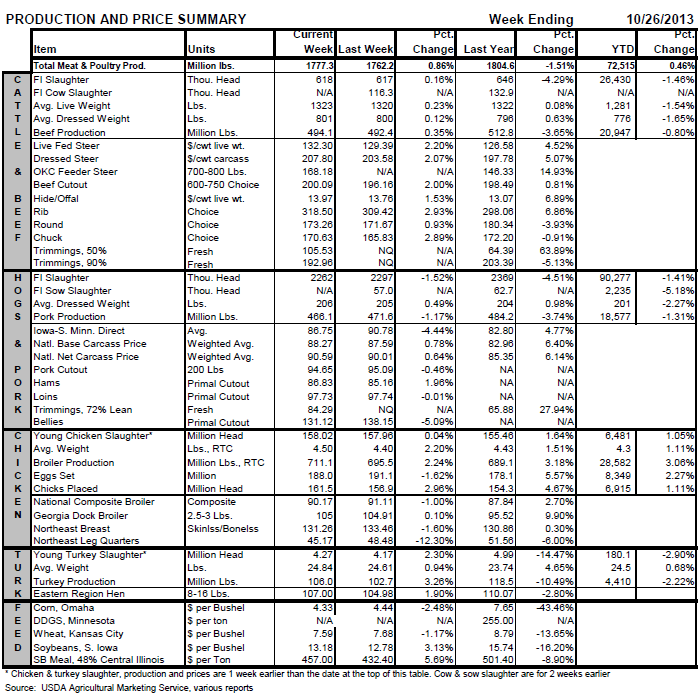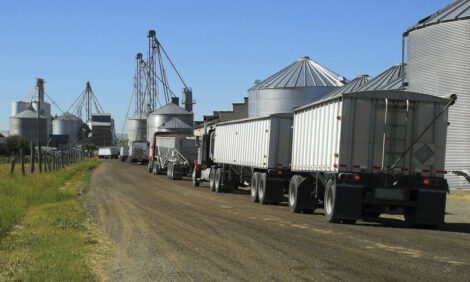



CME: Hog Slaughter Above Year-ago Levels
US - Readers will notice today that our weekly 'Production and Price Summary' is getting back to normal and is much more useful than it has in the past few weeks, write Steve Meyer and Len Steiner.Most of the missing values — such as cow and sow slaughter — will be filled in next week as USDA publishes the actual data for the weeks that ended October 12 (the missing piece this week) and October 19 (which would be next week’s current data since the female slaughter data always run two week in arrears).
A few critical numbers from this week’s Summary are:
- Fed cattle averaged $132.30 last week, the highest cash slaughter cattle price on record. But a couple of other numbers in the table are important relative to this figure. First, allowing for a 63 per cent carcass-to-live weight yield, that price would be associated with a cutout value of $210/cwt. But the Choice cutout last week averaged $200.09 and the Select cutout averaged $184.13. The most recent data we have (12 October) indicates that 62 per cent of graded cattle were graded Choice while 28 per cent were graded Select. Using those, the weighted fed cattle cutout would be $195.12. It’s pretty obvious that that value will not square well on packers profit/loss statement when they pay $132+ for cattle.
- The two critical numbers behind those prices, of course are the slaughter totals of the past two weeks. The 617,000 two weeks ago and 618,000 last week are the lowest for those two weeks since 1979 except for an odd week October 26, 1991 which saw only 583,000 head processed, 37,000 fewer than the week before and 38,000 fewer than the week afterward. There simply are not many cattle available and packers are having to chase the available supply. The critical question will be whether they can push wholesale prices up enough to restore acceptable margins — and keep consumers buying beef at those higher price levels. Note that the data point for two weeks ago is still an estimate — 625,000 head — pending actual data next week.

- The other critical number in the Summary table is the 2.262 million for last week’s federally-inspected hog slaughter. That figure is 4.5 per cent below one year ago at a time that the September Hogs and Pigs report said we should be 1.5 per cent ABOVE last year’s level. That shortfall is obviously nothing new as hog numbers have been sharply lower than last year (no surprise there) and, more important, what most observers expected after seeing the September report. Since September 1, FI hog slaughter has been 6.2 per cent below 2012’s level and 2.9 per cent lower than what we had anticipated given those September 1 inventory figures. The observation in the chart for two weeks is an estimated 2.275 million head.

Perhaps the most important development of the past week was the ominous news that PEDv has hit a number of sow farms in Iowa. Iowa had recorded more positive PEDv cases (237 through October 13) than any other state but most of those cases were believed to have been on grow-finish farms where death losses are usually not severe. The news that several large sow farms had broken suggests that losses will be much larger.
The pigs that die, however, would be from 0 to 3 weeks old and thus these losses will not impact market hog supplies until April. This news comes on the heels of expanding numbers of cases in North Carolina where 97 cases have been diagnosed from 15 September through 13 October, the most recent week for which data have been published. There are ongoing experiments with vaccines but we know of no results at this time.
Treatment regimens (most based on methods of handing transmissible gastroenteritis (TGE)) are helping but not completely solving the problems. Though the first case was found 15 April, significant death losses are not believed to have occurred until July and will thus not impact slaughter until January 2014. The slaughter shortfalls are not, based on this evidence, the result of PEDv.









